Birding in Suriname - Week 3 - Help me identify a bird and win 2 SBD!
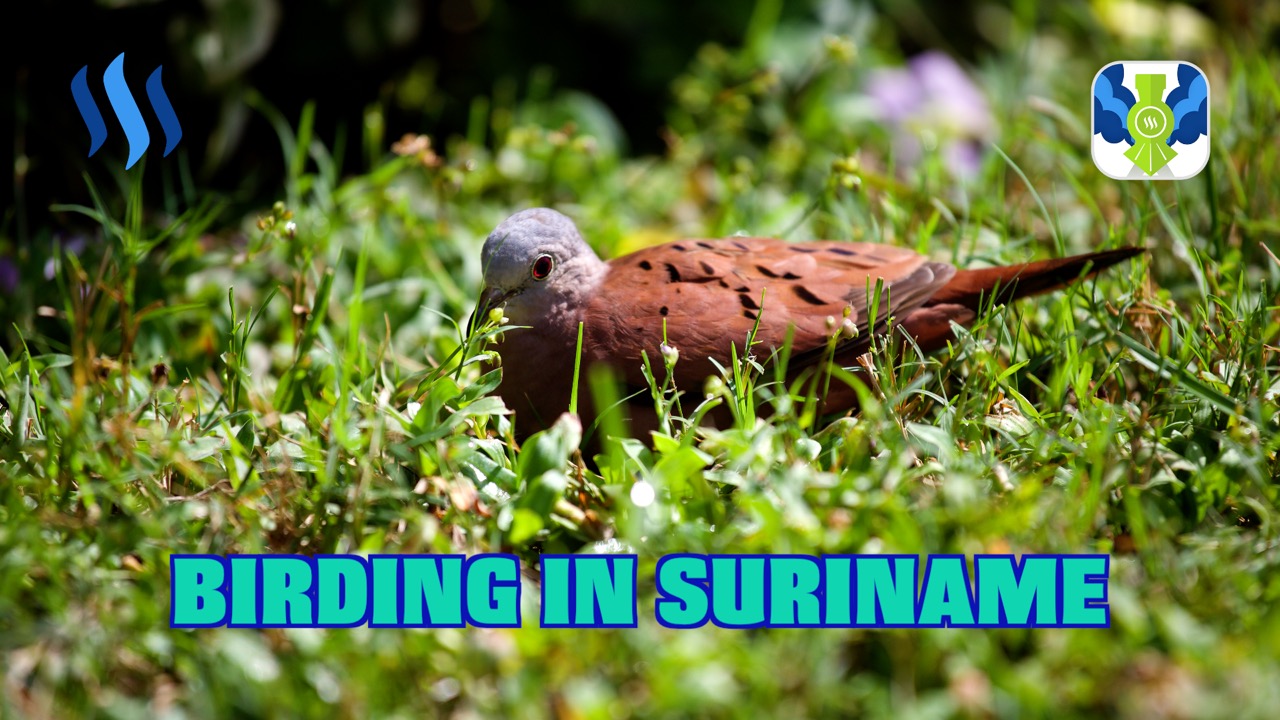
Welcome to another episode of Birding in Suriname. The dove in the thumbnail picture is a Rudy ground dove (Columbina talpacoti). Or is it a Common ground dove? They almost look exactly the same. But the Rudy is more common in Suriname especially in and around the garden.
These birds are always at it, so to speak. There are several nests in the garden. Here's one in a palm.
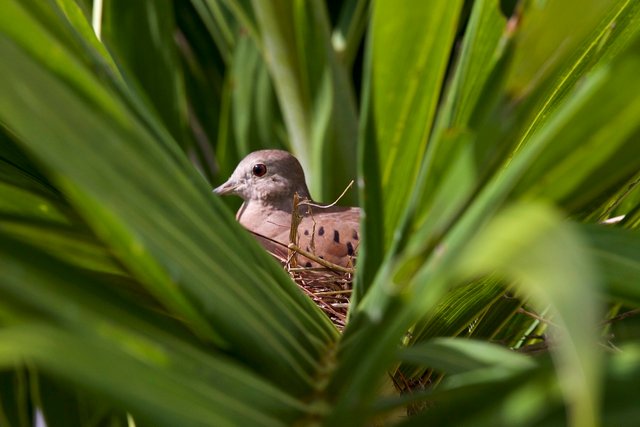
And another nest in another palm this time with two young which is the normal number for a nest of young.
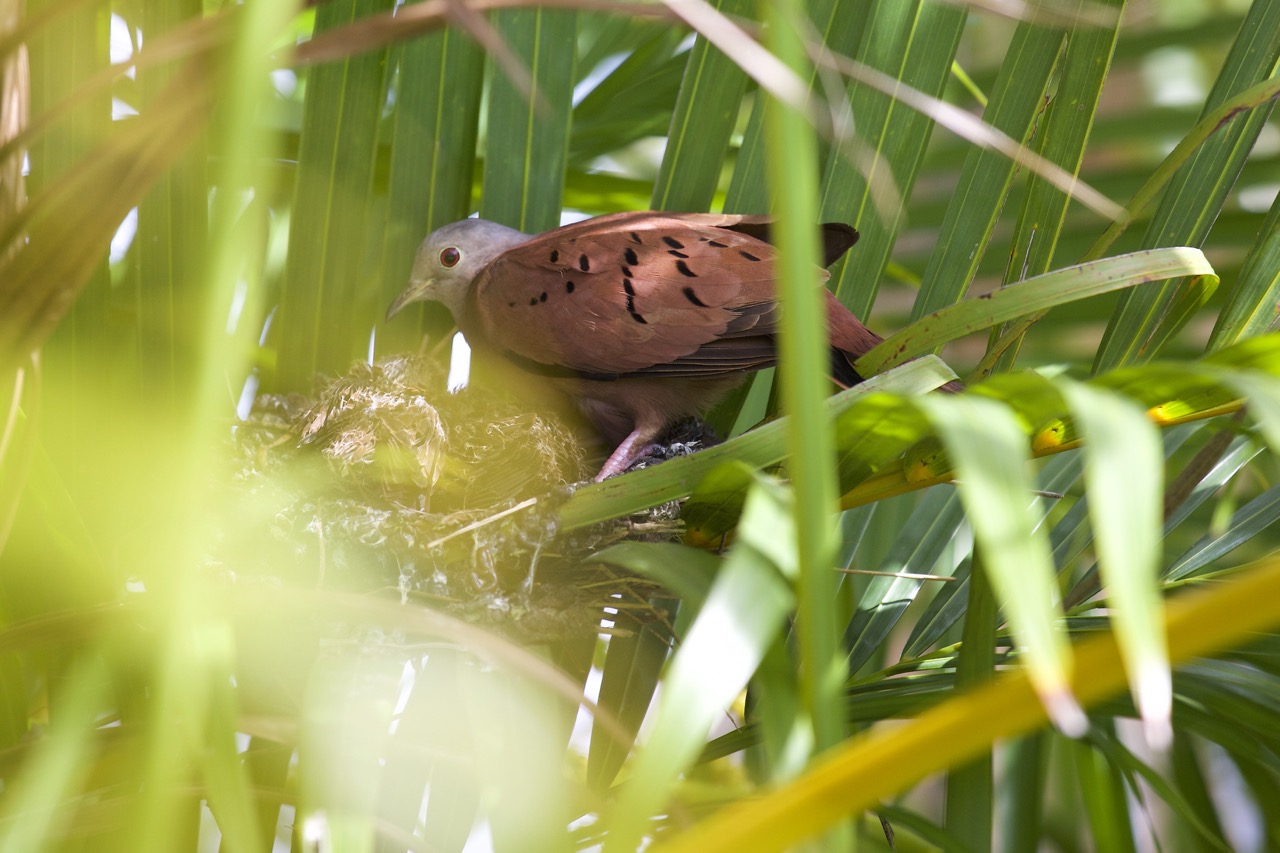
My birding adventures are mainly in and around Paramaribo, the capital city of Suriname. Suriname is one of the former Guyanas, north of Brazil.
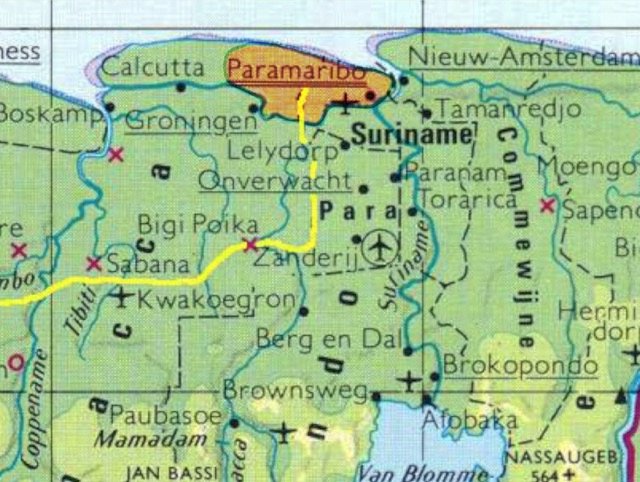
It consists of wetland, fields, mangrove, canals, forests and rivers. This picture with two Smooth-billed Ani's (Crotophaga ani) is a typical example of the landscape you might expect to find.
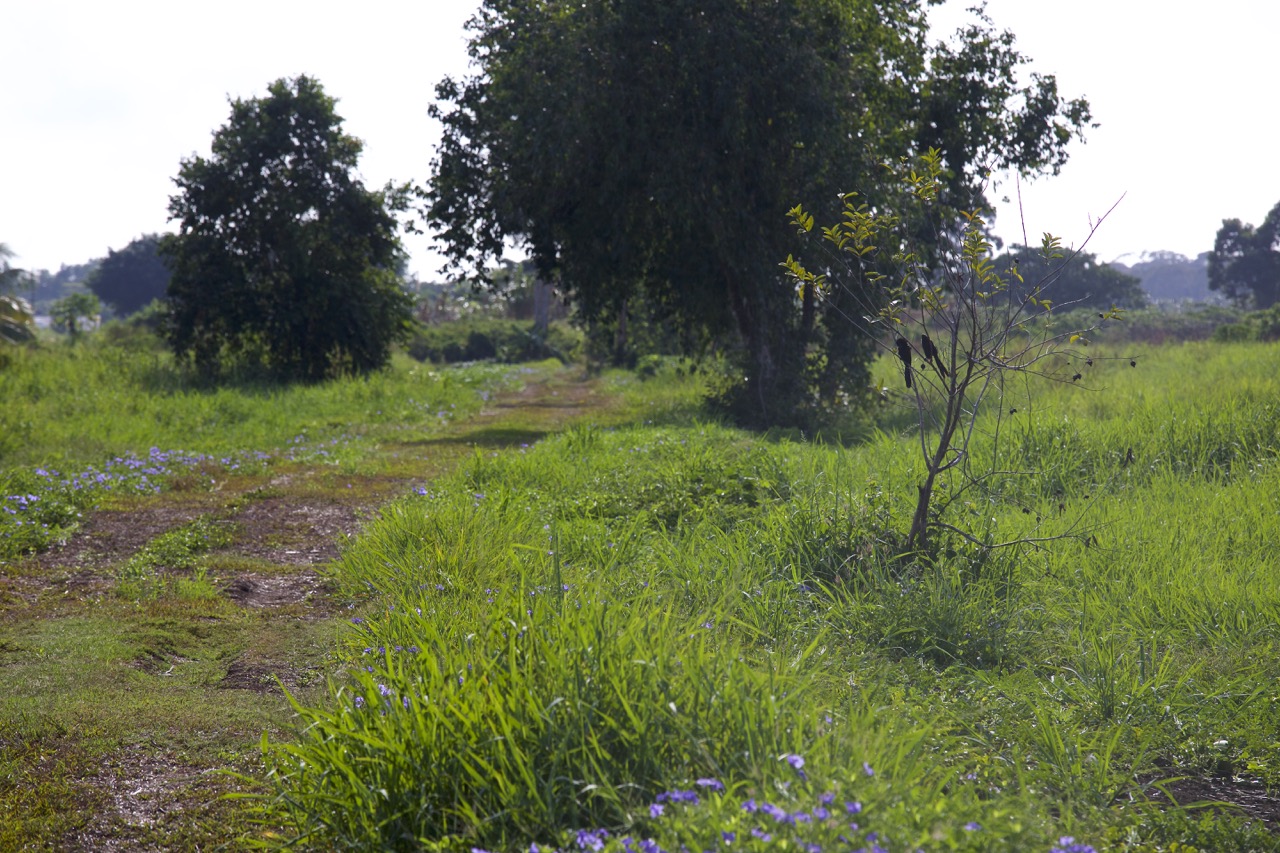
It's not just birds that we see when we go out birding. Last week I spotted a beautiful male sloth high up in the trees.
If you're interested in the sloth, you can find out more here.
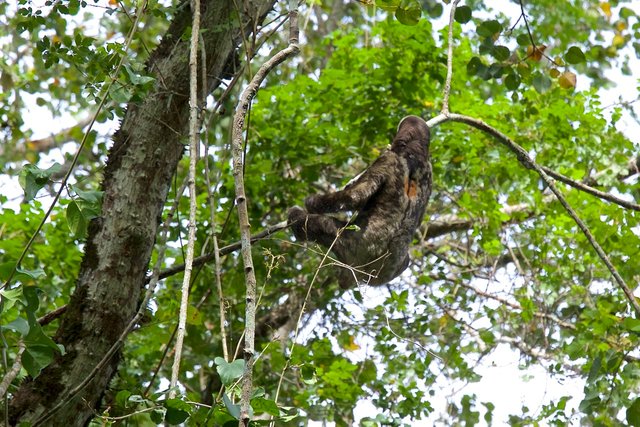
Another animal that we regularly see is this big reptile. It's a Tegu. They look like Monitor Lizards but they are only distantly related. I've seen them up to a meter long. They are omnivores and not dangerous to humans.
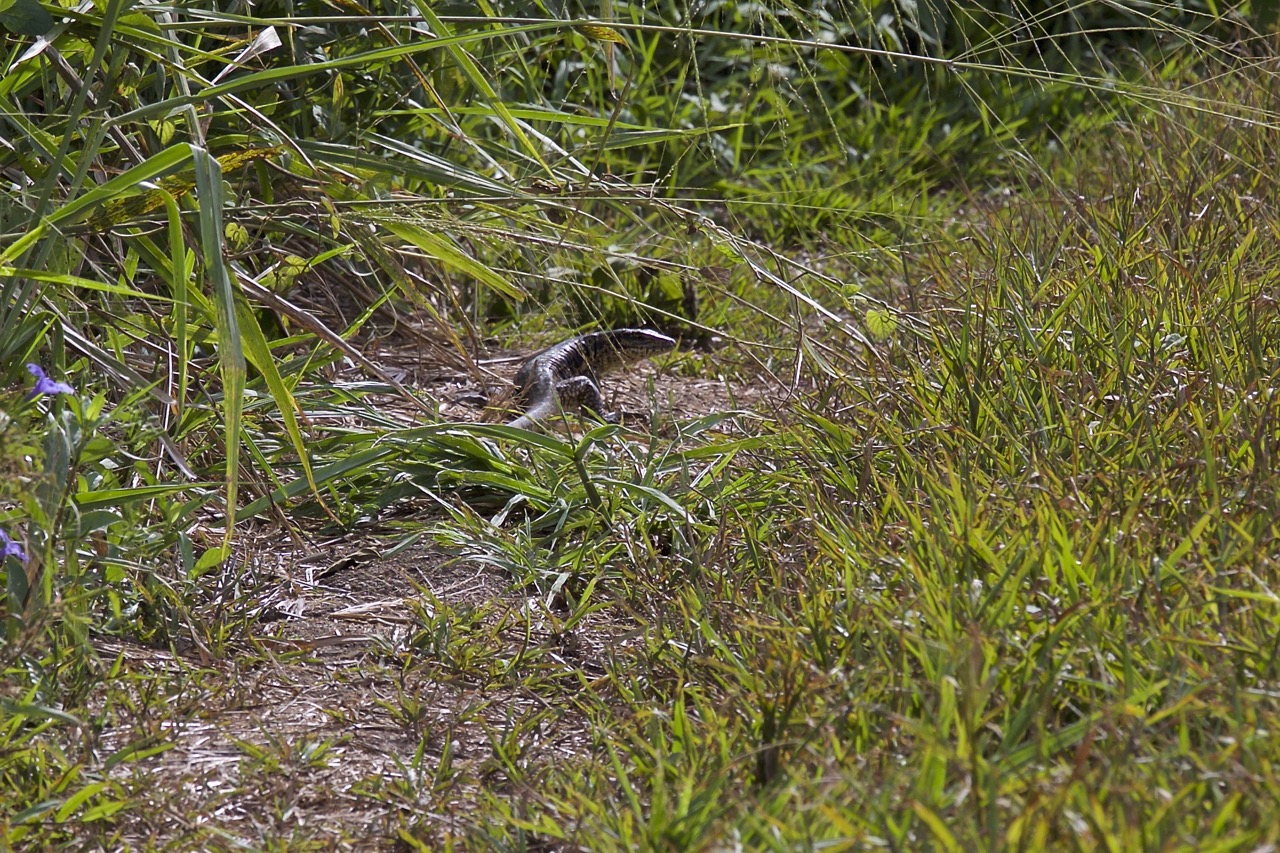
In the swamps and mangrove forests you see a lot of these Mud Skippers. They are real fish but can also live above the water where they crawl over the mud. They store water in their gills to breathe.
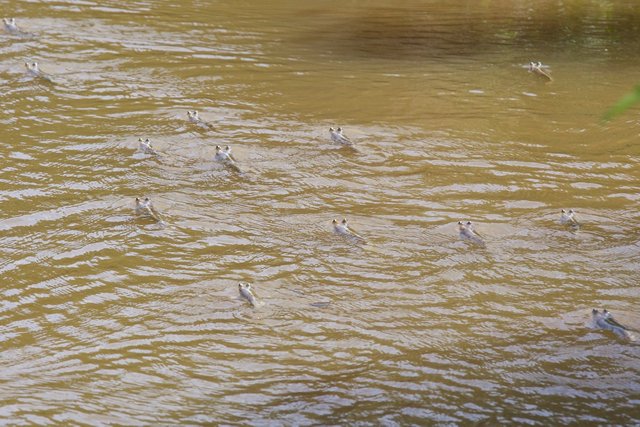
But back to the birds. Last week I spotted 7 more birds and identified 4. This brings my list of spotted and identified birds on 45. But I spotted more than 50! To celebrate that I'm having a little contest.
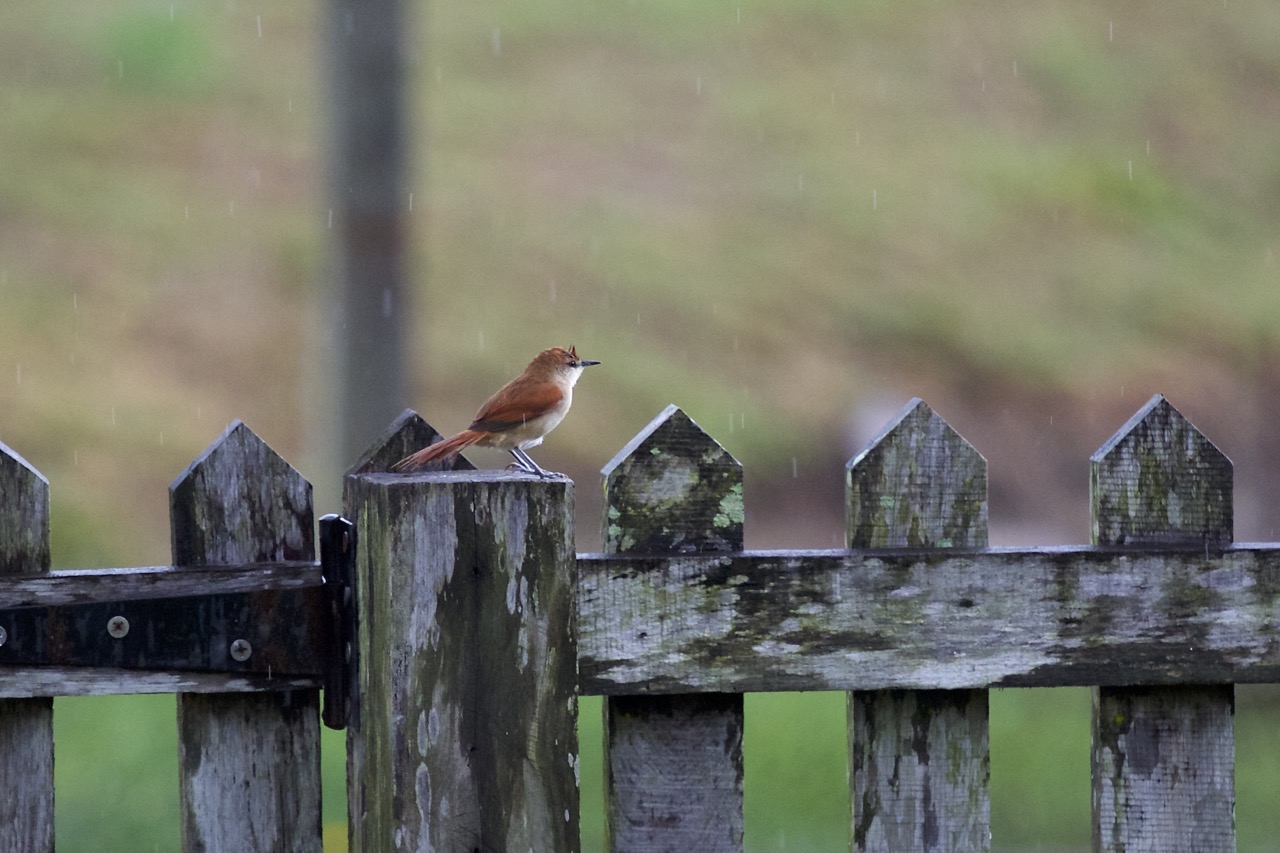
The first person who leaves the right name including the Latin name in the comment section will win the 2 SBD.

Identifying birds can be difficult and tricky. This noisy killer for example is the Great Kiskadee (Pitangus sulphuratus).
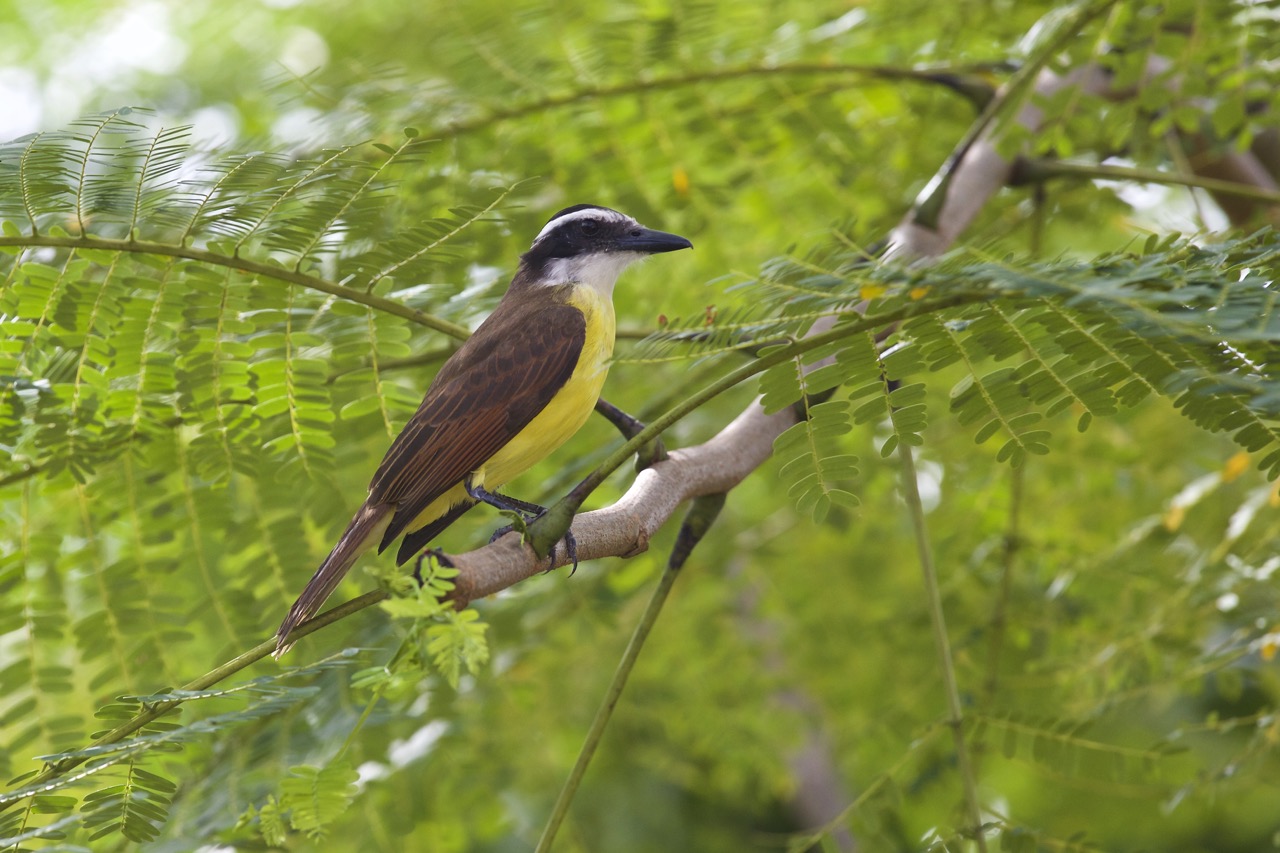
Which looks almost identical to this one, the Rusty-margined Flycatcher (Myiozetetes cayanensis).
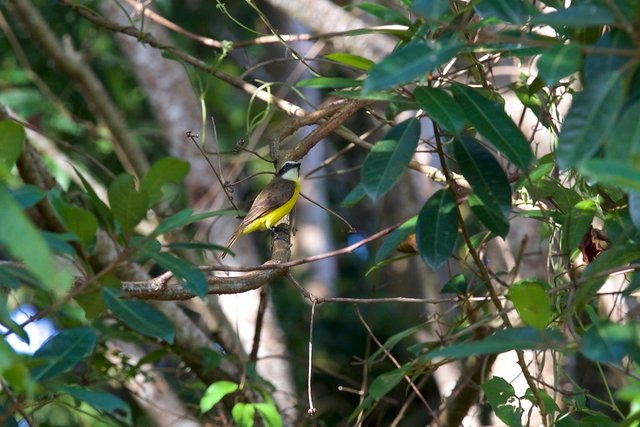
The bill is different as are its wings. It's also slightly smaller and the white band doesn't go all around his head as it does with the Kiskadee.
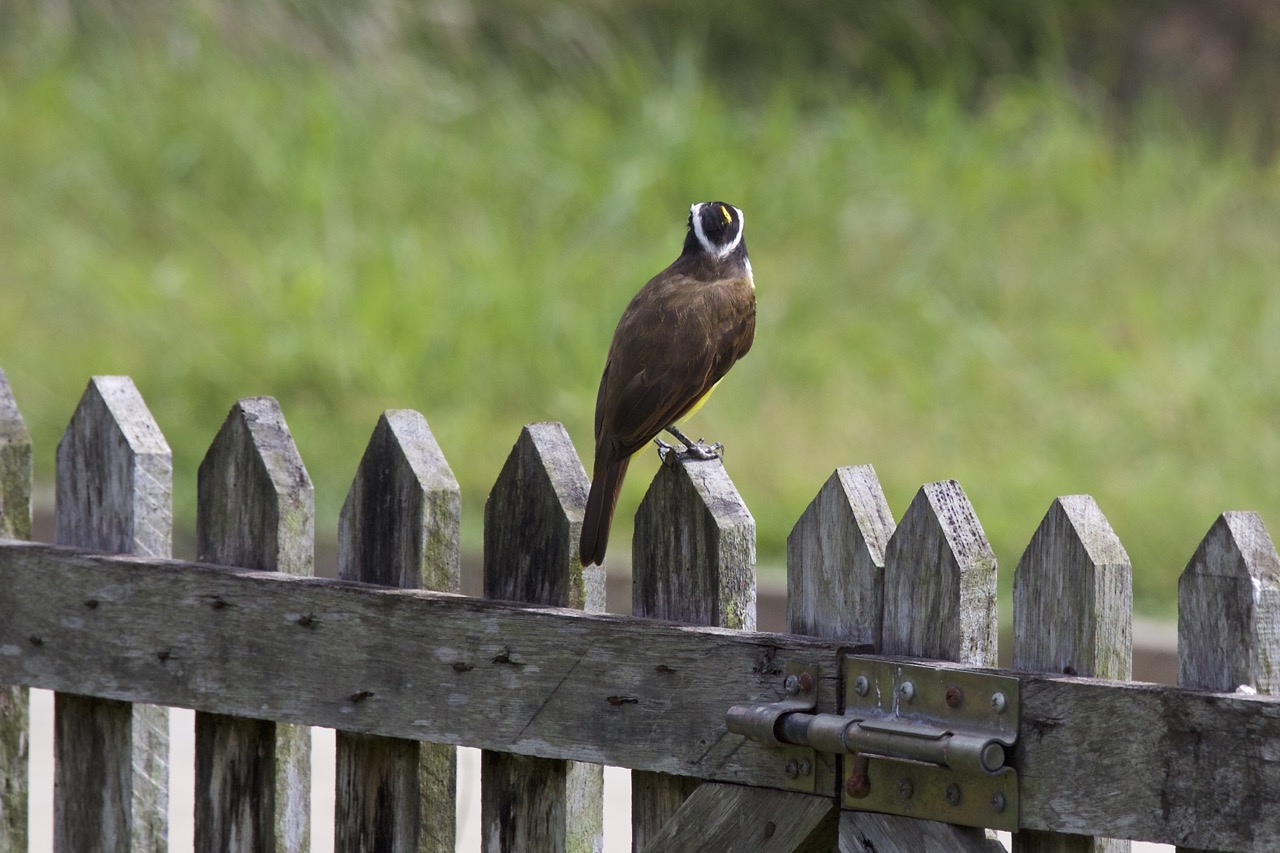
The Great Kiskadee is a noisy bird. You can hear it the whole day long shouting; kiskadee, kiskadee!!! Hence its name.
In this picture we see the Kiskadee fighting with a Tropical Kingbird (Tyrannus Melancholicus).
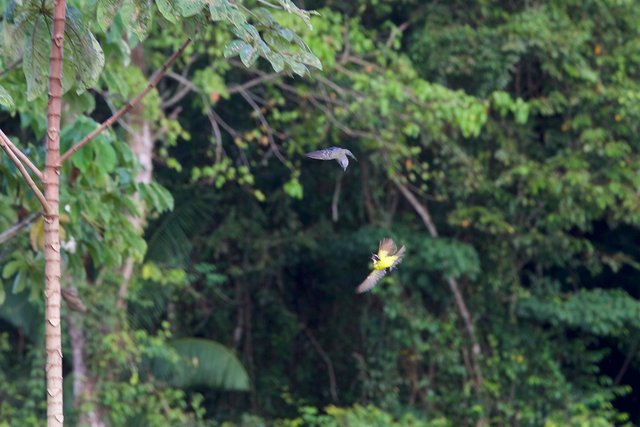
Green Kingfisher (Chloroceryle americana)
Much more shy and quiet is the Green Kingfisher (Chloroceryle americana). It can be found near canals and smaller rivers where it nests in the river bank by digging a tunnel up to a meter long. This is the female.
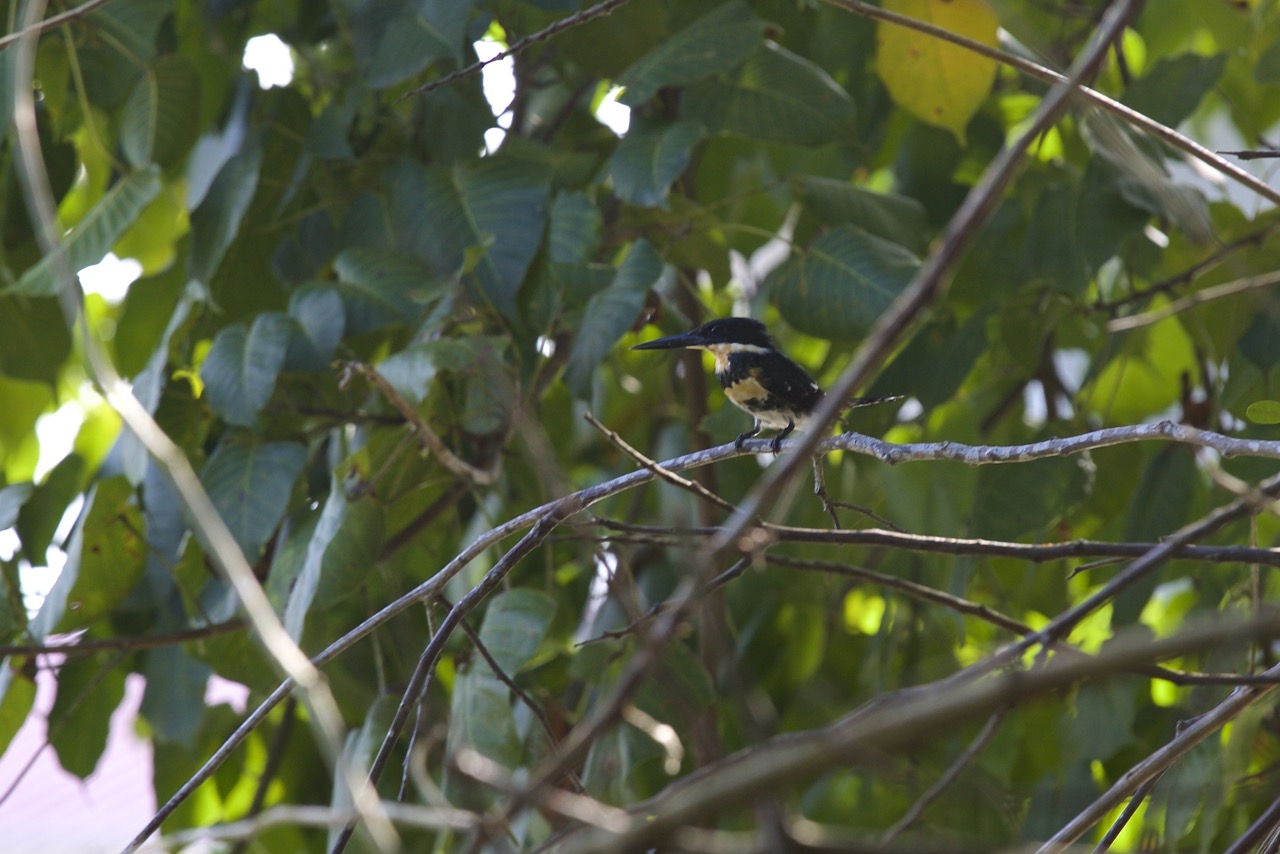
And this is the male, it has a read breast.
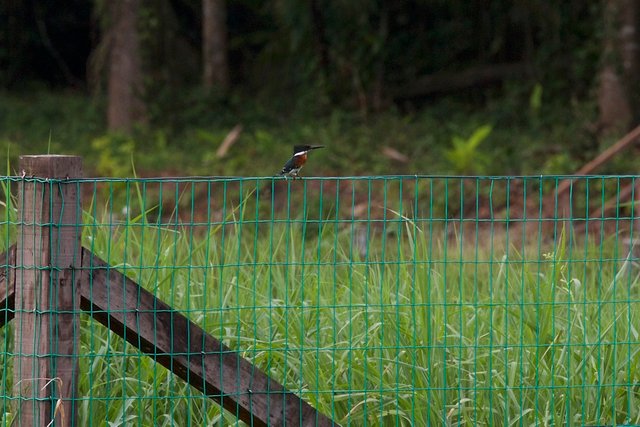
The birds are often seen perching in the bushes next to the water ready to dive for fish. But they also eat insects.
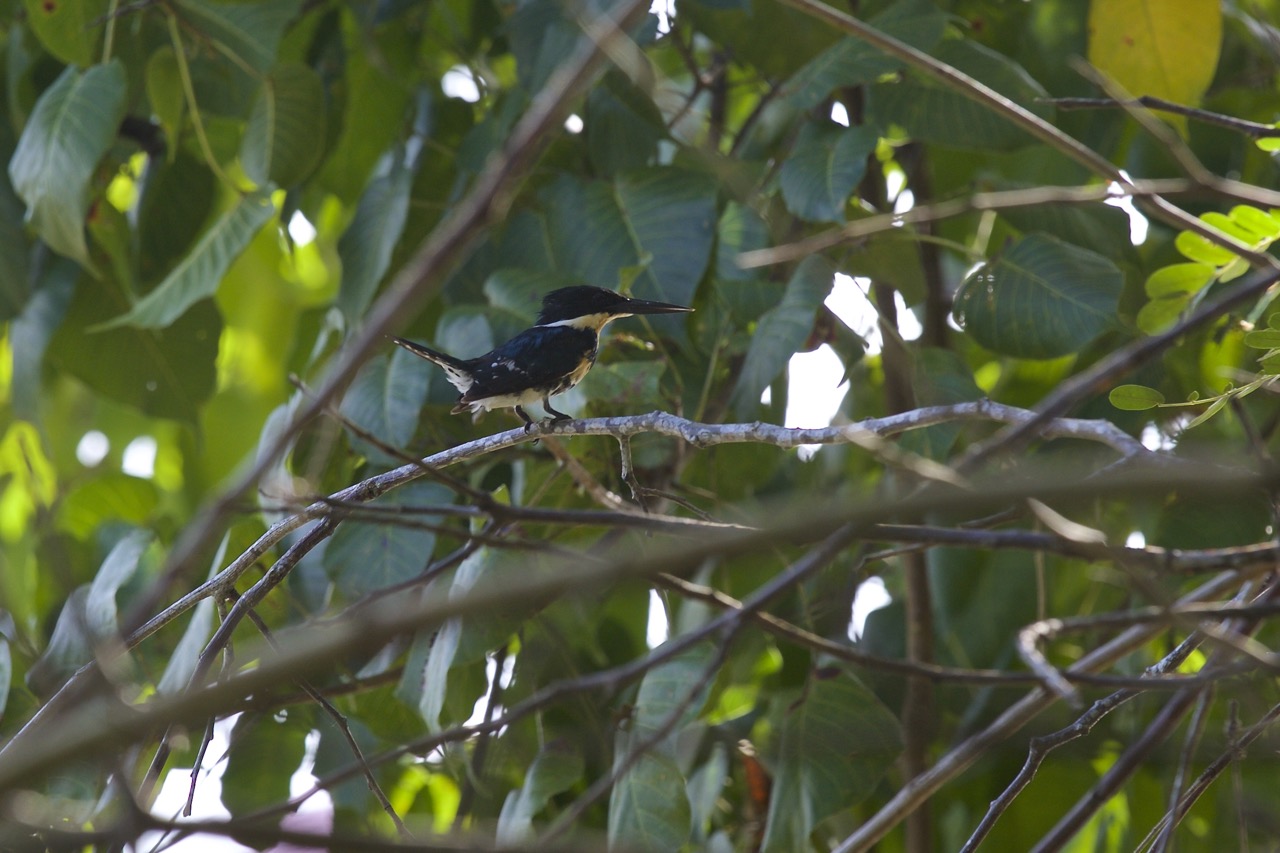
Black-capped Donacobius (Donacobius atricapilla)
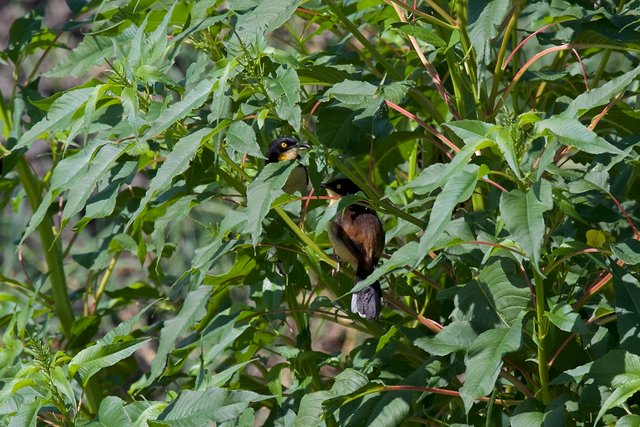
These birds are often seen in marshes and wetland. They mate for live and like to sing together in a duet.
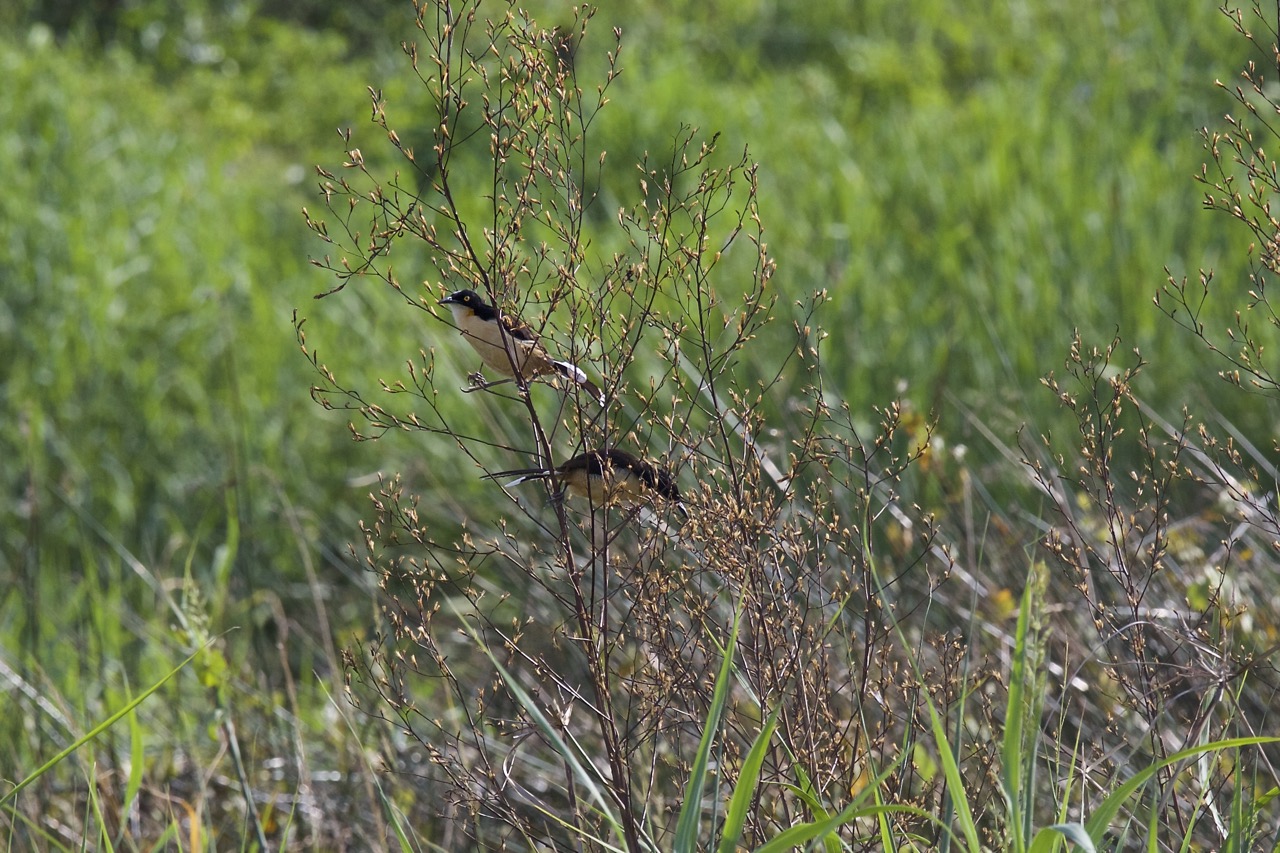
This bird is the only member of the genus Donacobius. They like to stay in low vegetation less than a meter above the ground.
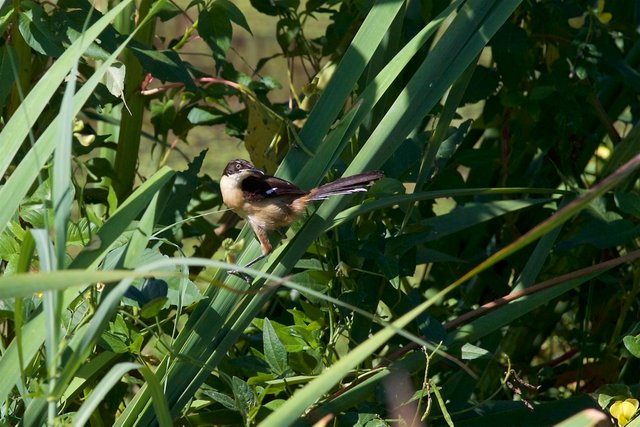
Cattle egret (Bubulcus ibis)
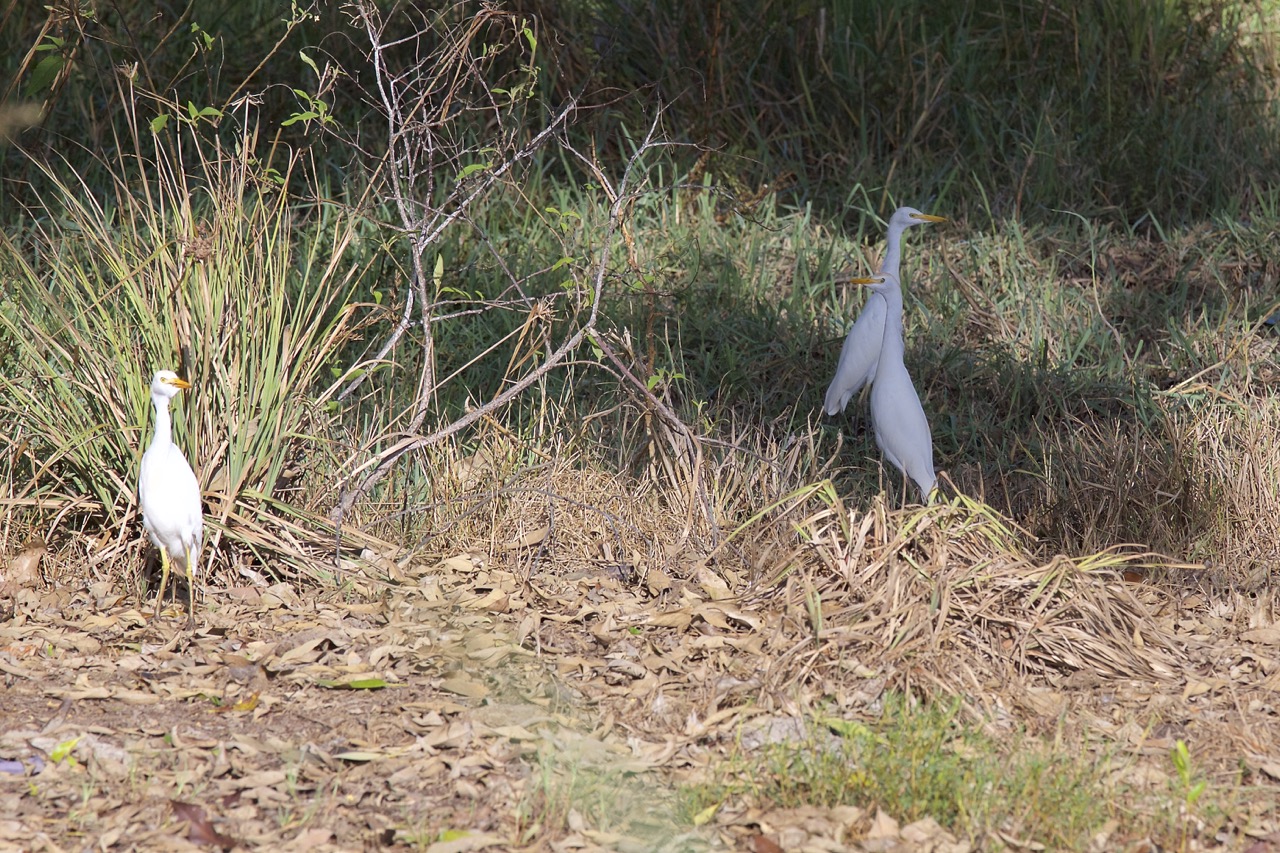
This Egret honours its name. It can often be found around cattle. Even sitting on top of them. It mainly eats insects and worms but also little frogs. Here a whole group can be seen in Nieuw Amsterdam.
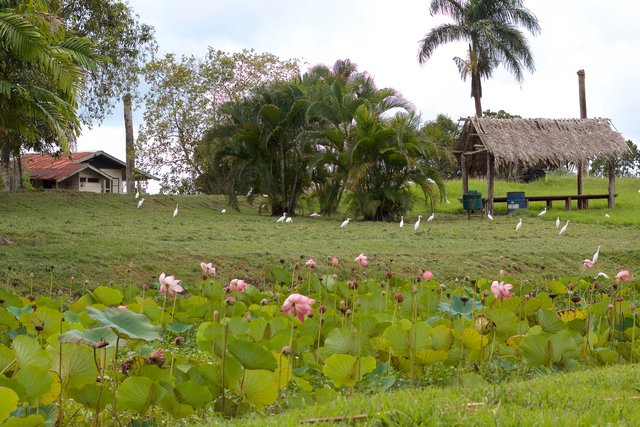
I'm planning to do a separate article about this egret.
I hope you enjoyed this third episode of Birding in Suriname. Please join me next week for more birding adventures.

Much love,
Gardenbsquared

Hi @gardenbsquared,
Congrats! Your post has been featured in The Daily Qurator #57. I hope you like it!
Your Quality Curator,
Dr. TLK :D
That's great. I'll check it out. Thanks.
Hmm...hard to find an exact match - we are looking in a section called - Chamiceros (our guide is in spanish) which includes genuses such as Synallaxis, Hellmayrea, Cranioleuca, and Certhiaxis. We belive it is either - Certhiaxis mustelinus (better coloring match but no crest) or Cranioleuca hellmayri (crest by seems grayer in the guide). It is possible, since ours is a Colombian guide - that it is another species in this grouping, that you will find in your Suriname specific guide.
Thanks for the fun contest! We are still getting better at this, and it takes practice! Let us know the real answer when you find it ;)
You're brilliant. You're not quite right, but when I looked up Certhiaxis mustelinus, which looks very much like it, I saw it was an ovenbird. Looking at that section for Surinamese birds I saw a Certhiaxis cinnamomea. I believe that must be it. It's a Yellow-chinned Spinetail.
Thank you for helping identifying this bird. You sir, win the contest.
Yay! So happy to help! Birding is a journey we take together ;p
Thanks again. Birding can be really difficult. I'm glad to have a friend on this journey.
👋😇👍
Congrats, good determination there.
Thanks for sharing this informative post about birds in Suriname.
The photos are lovely!
Thank you @superstar2018. I'm glad you enjoyed it.
You're most welcome @gardenbsquared!
I'm not an ornitologist but I think it's a subspecies of the house wren (Troglodytes aedon).
I looked there as well but unfortunately that's not it. I looked at most of the Surinamese birds but I can not find it. Thank you.
Wow this was such an informative post. I wasn't a bird or animal enthusiast ever but now that I have a child who loves animals and bird, i am taking more interest in them. He got a book from his school library a few weeks back which had a story on a topic similar to the theme of this post. A girl goes out with her daddy to watch birds and wants to find robin redbreast. She finds lots of other birds such ad doves, wrens and purple martins on her way but not the redbreast. She eventually finds it in the end. It was a cool story and my son loved it. Since then he has been fond of birds and wants to find more. This post made me recall that beautiful memory with him so thank you for that. I will also show him this post when he's back from school. I am sure he will love it. Also, I was going to attempt at finding out that bird's name but since @ecoinstant already did that, I no longer need to search for it :)
Thank you very much. It's nice to see your son taking an interest into the birdies. I hope he'll enjoy the birds in this post. I'm sure in the future I'll need some more help identifying birds.
We are going for the bird guide!
There's a cool website surinamebirds.nl. It's without commercials and it started in 1996. It's my main bird guide.
So Suriname is a Dutch Colony? I will check out that site and see if we can't narrow it down a bit
It's a former Dutch Colony. It became independent in 1975.
Very cool! I might do a little research I have always wondered/wanted to know more about those three little guys on the top; the rest of my South American history is pretty strong.